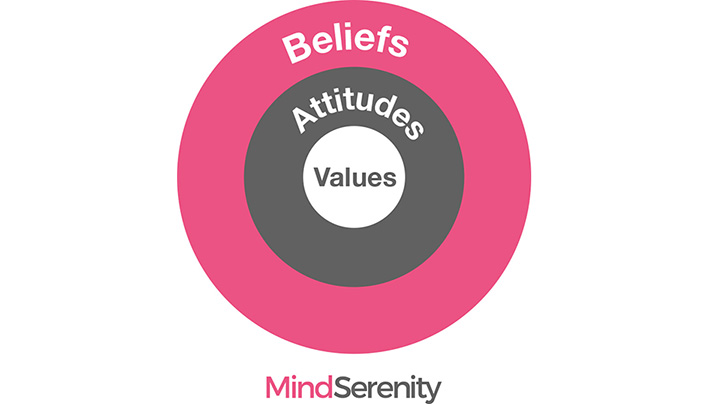What stops us from fulfilling our dreams?
Do you think it is your beliefs?
Have you ever stopped to think about some of your beliefs and where they come from?
Did you inherit them, were they imposed upon you as a child; do they come from your parent’s, your culture, your friends or your religion?
We all have beliefs, we live our lives from day to day with beliefs that we believe to be true! We have adopted them, we wear them, and we reinforce them even when things go wrong.
What are beliefs?
Beliefs are our brain’s way of making sense of the world, what we see and experience in the world. They are mental representations of the ways our brains expect things in our environment to behave, and how things relate to each other. Beliefs create our reality they function in the form of values against which we make decisions throughout our lives.
They are the assumptions we make about ourselves, about others and about how we expect things to be. They function on the unconscious level and our values stem from our beliefs. Attitudes are the way we respond to people and situations based on our beliefs.
Beliefs, values and attitude are inked; they can have an impact on our attitudes and behaviours unless we choose to challenge our beliefs or values.
Most of us think about what we should do or how we should feel or even what we should or shouldn’t say. Some of us start to challenge our beliefs and others just continue to use outdated beliefs.
If we have fixed beliefs then we will normally dispel anything that contradicts that belief, for example: if a person believes that their religion is the only religion then they will reject other religions (often without any understanding of) the things that believers’ in other religions hold to be true, therefore people’s beliefs assume that things are true.
Where are you now?
It is healthy to challenge beliefs and you don’t have to go on believing what you were taught or heard when you were a child were true beliefs, often these are someone else’s beliefs. We all have free will, beliefs are not fixed and you can choose to change them if you wish, to what you believe fits into your reality of the world.
When you are faced with a life changing situation in your life: redundancy, life threatening illness, death of a loved one, you may have to evaluate your life and change your beliefs.
Often limiting beliefs stop us from living the life we want because we believe that maybe we aren’t good enough or worthy enough or loveable enough or clever enough. We are stuck in that same old uncreative job, or in a destructive relationship. We believe we can’t make money so we remain in poverty or just surviving. We miss opportunities that come our way purely due to our beliefs.
Isn’t it about time that you started to challenge your beliefs:
When a thought comes into your head and it usually starts with ‘I can’t” or ‘It’s too late” examples:
· I can’t make money
· It’s too late to start a new career
· I can’t have a decent relationship
· I can’t lose weight
Here’s an exercise you can do:
Find your limiting belief and write it down, now question the reasons why you have this belief and answer them on a piece of paper.
1. Where did it come from, with whom do you associate this belief with – parents, peers, friends?
2. Think why you adopted this belief – what does it mean to you
3. How do you feel about this belief, are you happy with it?
4. How do you know it is true?
5. What evidence do you have?
6. What has happened in the past to reinforce it
7. What would happen if you changed this belief, explore the possibilities
8. Now put in a new belief – to create what you want; how does it feel?
9. Adopt it, see it, hear it, feel it – make it your belief now!
Keep reinforcing your new belief until it becomes your reality.
For more information please get in touch with Alma on 01737 812 498 or email alma@minserenity.co.uk
Editor’s Note: This post was originally published 15 October 2014 and has been completely revamped and updated for accuracy and comprehensiveness.




